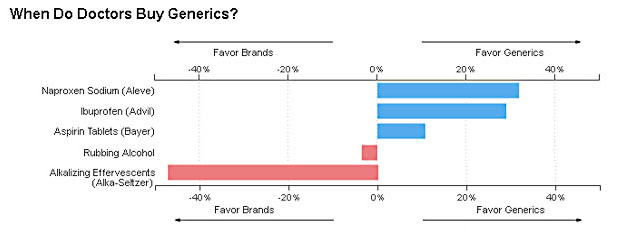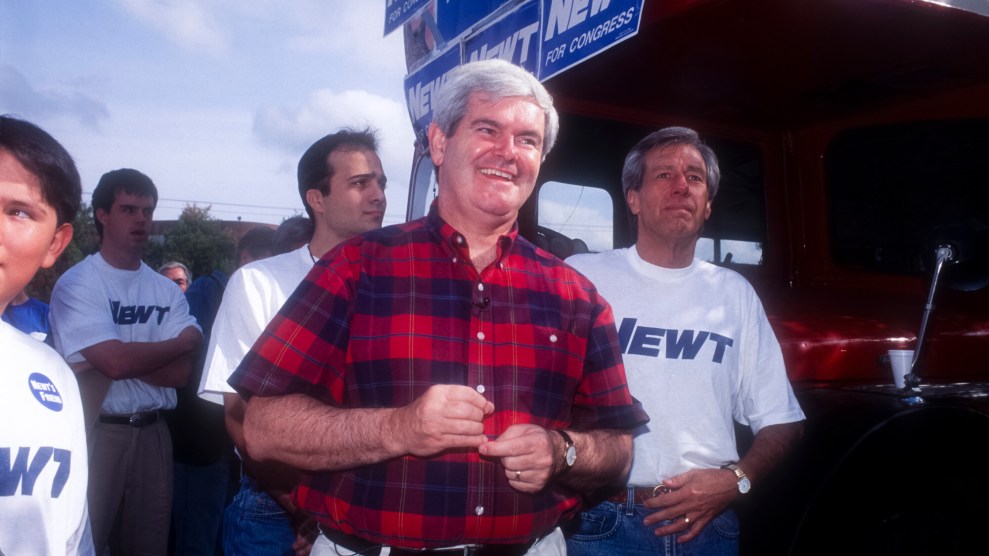Sarah Kliff takes a look today at our use of generic drugs. Long story short, it’s surprising how few of us save money by buying generic pain medicine instead of name brands (Advil, Tylenol, Bayer, etc.). Why? In most cases, I suppose it’s just ignorance: people don’t realize that the “store brand” is genuinely identical to the name brand. In other cases it might be something else. I buy generic ibuprofen, and it usually comes in the form of small brown pills. One day, however, I went to to a different drug store to stock up, and it turned out that their generic ibuprofen came in the form of small orange pills. Marian used these for a while, but really hated them. Eventually she cracked, and insisted on buying a new bottle from our usual drug store. Sometimes little things can make all the difference.
Anyway. The main point of Kliff’s post is that generics are good, and as evidence of this she puts up a chart showing what doctors themselves buy. Here’s an excerpt from the chart:

It’s true that doctors mostly favor generics when it comes to basic pain relievers. But frankly, what’s amazing to me is how little they prefer them. For chrissake, they prefer generic aspirin by only ten percentage points. That means they buy the name brand about 45 percent of the time. Why would a doctor do this? Granted, the extra few dollars is probably no big deal to them, but why waste it anyway? Certainly not because of ignorance. Are their spouses doing the buying? Or what?
And why the active preference for name-brand rubbing alcohol, of all things? It’s hard to think of anything more generic than that. What’s the deal here?
As for Alka-Seltzer, the dislike of generics is so huge that there just has to be some real difference here. But what?
In any case, I suspect this might have some real importance beyond the question of doctors spending a few dollars they don’t have to. If physicians aren’t really sold on generics in their own personal lives, does this mean they’re not really sold on them in their professional lives too? Do they tend to prescribe name brands when they shouldn’t? And how much does this cost all of us?

















